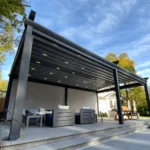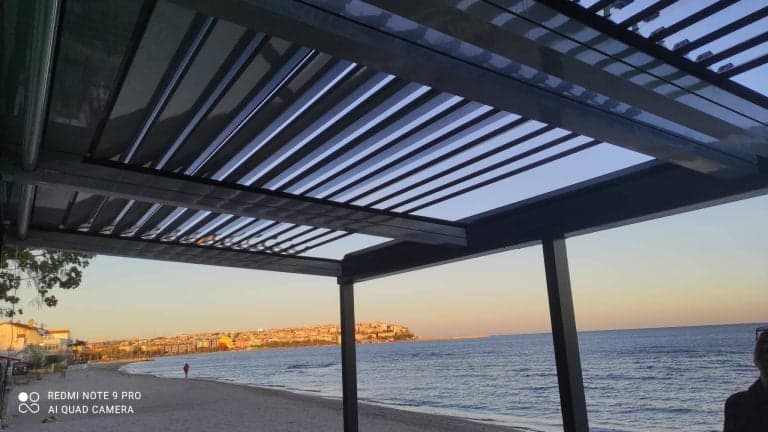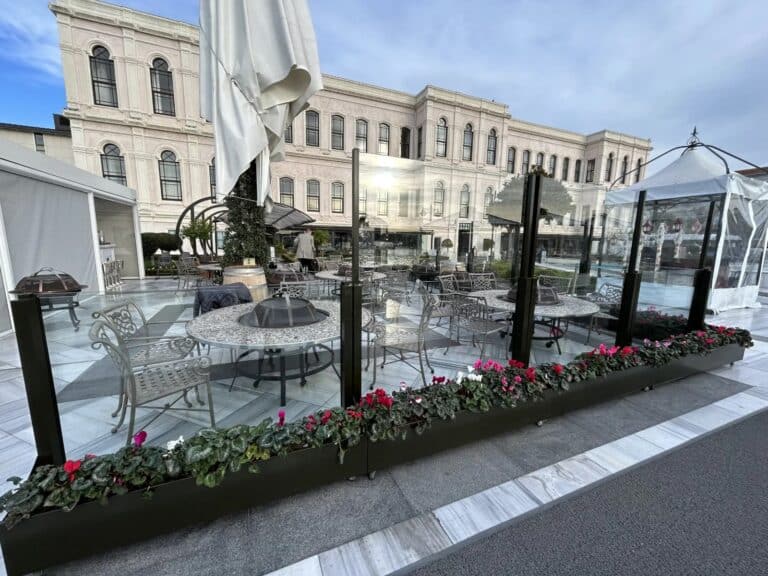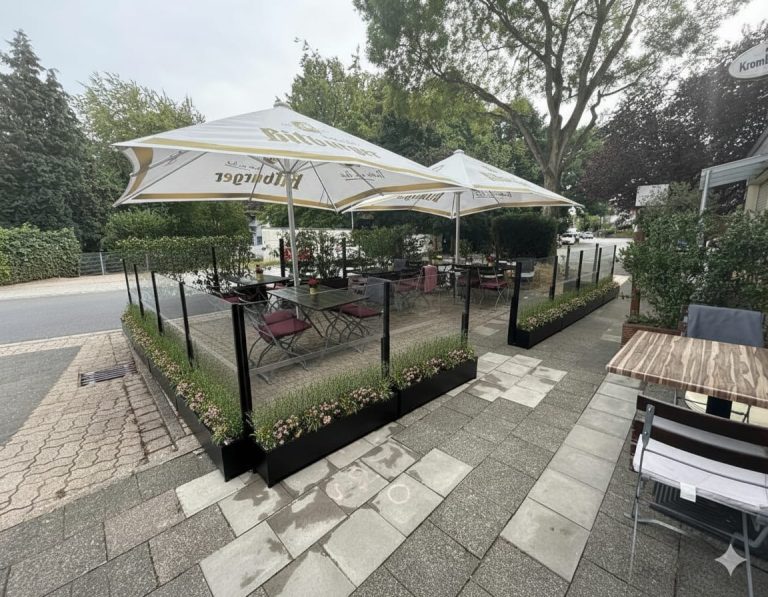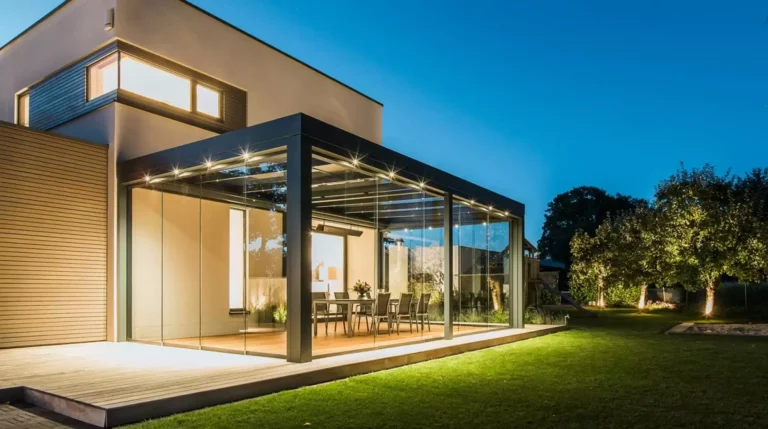Today, environmental problems and the fight against climate change have increased the interest in the sustainability of architectural designs. In this context, awning and pergola systems attract attention with both their aesthetic and functional features. Especially Sustainable Awning their designs minimize environmental impact thanks to the use of environmentally friendly materials, while also offering advantages in terms of lifespan and energy efficiency. In this article, we will detail the environmental impacts and future sustainable applications of these systems, starting with the materials used in sustainable awning design.
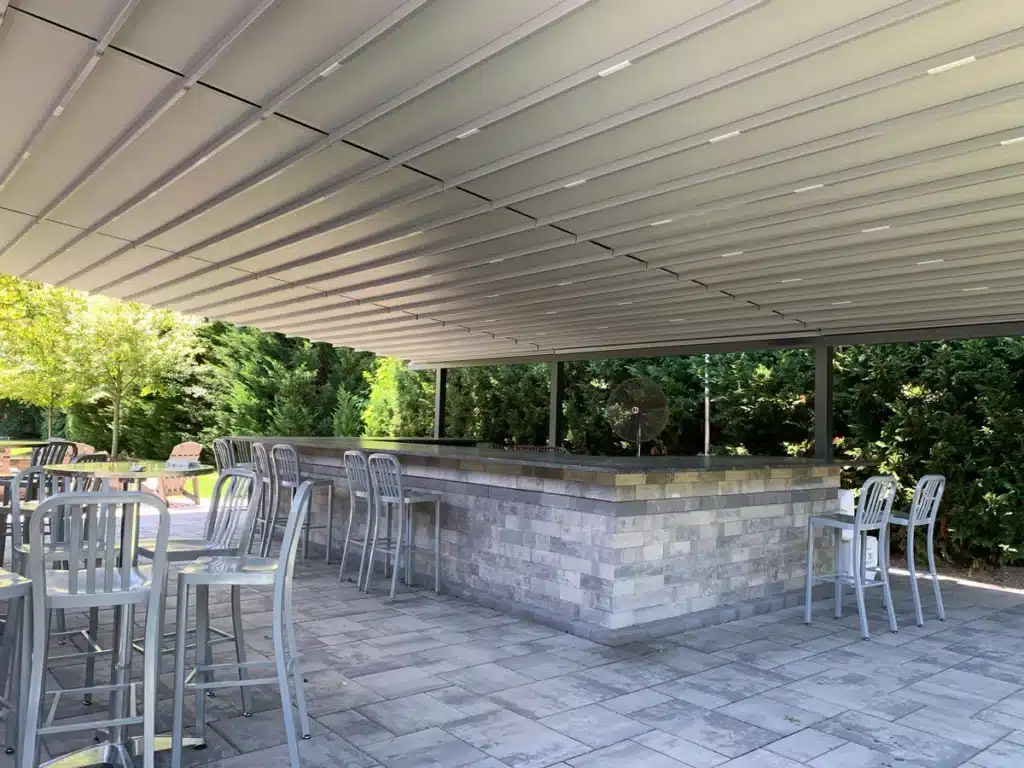
Materials Used in Sustainable Awning Design
The materials used in sustainable awning design stand out with their environmentally friendly and long-lasting features. The selection of these materials not only provides an aesthetic appearance, but also contributes to minimizing the impact on the environment. Bamboo, recycled polyester And organic cotton Materials such as these are prominent alternatives in terms of sustainability.
Bamboo, is preferred because it is a plant that grows quickly in nature. This material, which has a high carbon absorption capacity, consumes less resources than traditional wood species. At the same time, it has excellent durability and flexibility. Thanks to these features, it provides structural integrity in awning systems and also offers an aesthetic appearance.
Another frequently preferred material is recycled polyesterThis material is obtained by recycling waste polyesters and helps reduce environmental impact. In addition, its resistance to UV rays ensures that awnings and pergola systems have a longer lifespan.
Organic cotton It also has an important place in sustainable awning design. Organic cotton, which is grown without the use of chemical fertilizers or pesticides in agricultural processes, can be produced without harming the balance of nature. In addition, cotton fabrics increase user comfort by providing good air permeability.
In addition to such materials, natural oils and biodegradable coatings These coatings do not harm the environment by breaking down in nature over time. Thus, awning and pergola systems support sustainability not only with their designs but also with the materials they use.
As a result, the materials used in sustainable awning design help minimize environmental impacts while also providing users with advantages with their aesthetic and functional features. Being careful in material selection in this process contributes to both nature and human health.

Environmental Impacts of Awning and Pergola Systems
Awning and pergola systems have an important place in terms of aesthetics and functionality in outdoor use. However, the environmental impacts of these systems should not be ignored. Firstly, the damage caused to nature by the materials used in the production process of these structures should be emphasized. Generally, materials such as PVC, polyester or aluminum are preferred. During the production of these materials, high energy consumption and chemical wastes occur. Therefore, from this perspective, the selected materials recyclable and sustainable care should be taken to ensure that.
Another factor are the environmental impacts of the installation of awning and pergola systems. The areas where these systems are installed may result in the loss of natural vegetation or disruption of the ecosystem balance. When installed correctly, such systems can help preserve the natural environment. For example, can help maintain groundwater levels by providing shade. In addition, these systems can reduce air conditioning costs by saving energy in areas where they are used.
Moreover, awning and pergola systems maintenance processes are also an important factor in terms of the environment. It is known that cleaning without using chemical cleaning agents causes less damage to nature. Therefore, environmentally friendly maintenance methods should be preferred. In conclusionThe environmental impacts of awning and pergola systems should be carefully evaluated both in material selection and in usage and maintenance processes. In this way, it will be possible to adopt an environmentally sensitive approach while ensuring aesthetics and functionality.
Sustainable Awning Applications and Future
Sustainable awning applications, has an important place in the field of construction and outdoor design. These applications not only provide an aesthetic appearance through the use of environmentally friendly materials and techniques; they also provide energy efficiency and environmentally friendly approaches. With the developing technology, the designs of awnings and the materials used are also undergoing a major transformation.
Today, solar panels Awning systems integrated with are prominent. These systems can meet a significant portion of the energy need by converting sunlight directly into electricity. In addition, such applications positively affect the interior environment of buildings, reducing the need for air conditioning. In addition, rainwater collection systems Awnings supported by also provide a new dimension in managing water resources.
Besides all this, modular designs and innovative tools increase the functionality of awnings. These systems, which can be customized to suit the needs of the spaces, provide more efficiency with less material. In the future, innovations such as nanotechnology and smart materials will continue to increase the durability and functionality of awnings.
Sustainable awning applications, plays an important role not only in individual living spaces but also in urban planning. Outdoor design, which was first done without thinking, is being reconsidered according to the principle of sustainability; thus, greener and more life-friendly areas are being created. In this context, while increasing the general quality of life of the society, it also increases the awareness of protecting natural resources.
The sustainable awning systems of the future will not only be remarkable with their environmentally friendly materials, but also with their functionality and aesthetic appearance. Therefore, the creativity of designers and engineers who adopt the principles of sustainability will be pergola plays a major role in the evolution of systems.
Discover More
Frequently Asked Questions
What is sustainability in awning and pergola systems?
Sustainability in awning and pergola systems means designing and manufacturing processes that are sensitive to environmental impacts. This includes the use of natural materials, energy efficiency, integration of recyclable materials and environmentally friendly production methods. These systems provide protection from sun and rain, while also aiming to protect nature and use resources efficiently.
What materials are used to make these systems environmentally friendly?
Eco-friendly awning and pergola systems are often manufactured using sustainable materials such as wood, aluminum or recycled plastic. While wood is a natural and renewable resource, aluminum offers a long-lasting and recyclable option. Additionally, some manufacturers aim to increase functionality without harming the ecosystem by opting for eco-friendly fabrics that are UV-protected and waterproof.
How do sustainable awning and pergola systems save energy?
Sustainable awning and pergola systems can help reduce air conditioning use by controlling sunlight and temperature. In particular, they help keep interior spaces cool by blocking sunlight, thus reducing energy costs. In addition, by using high-quality and energy-efficient materials, air conditioning systems consume less energy, making it possible to save energy in the long term.


